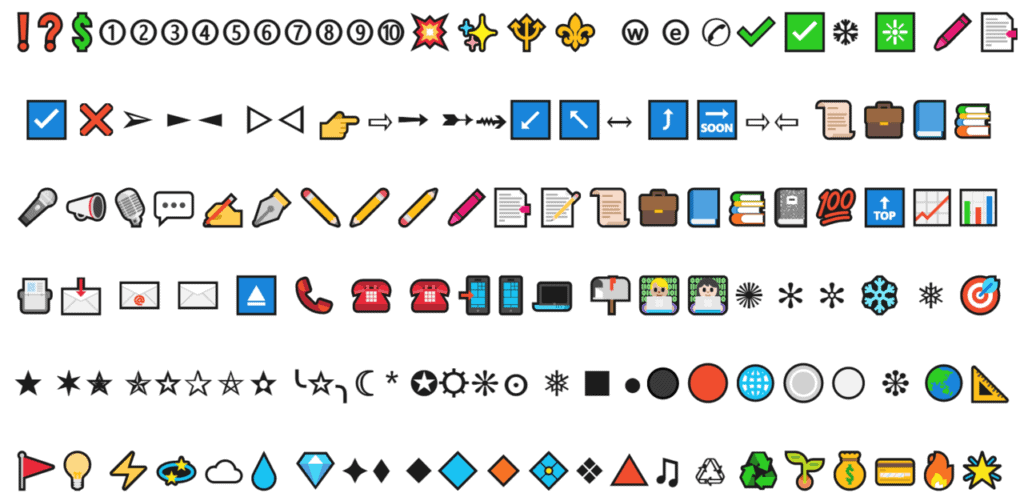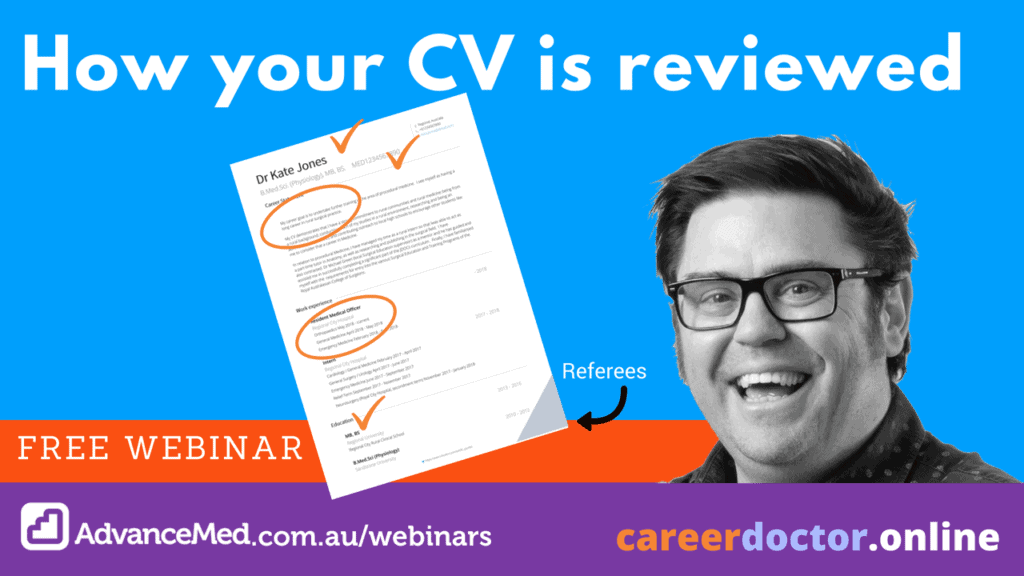By Dr Adam Harrison, LinkedIn User
Are you thinking that you need a LinkedIn profile for your next job application? In this special guest post, Dr Adam Harrison, expert LinkedIn user takes us through the steps that you should implement to create a great Linkedin profile for doctors.
Of particular importance when creating a LinkedIn profile as a doctor you should…
The best news is that these steps are all fairly easy to implement and won’t take you a great deal of time. Let’s dig into the details
1. How to Create a Great Linkedin Profile for Doctors. Add a professional profile picture (not a selfie!) of yourself.
We all know that with social media the most important thing to do is to add a photo. Yes. Counterintuitively to all the advice we give on this blog about not having a photo on your CV or resume. A photo on LinkedIn is a must-have!
This is probably the most important thing for LinkedIn.
Profiles with pictures get at least 14x more views and 9x more connection requests than those without. As Jamie White (Irish entrepreneur with >25K followers) says:
“How many times will people see you today but how many times will people see your social media profile today?”
Jamie White
The answer is many more times. So, spend as much time thinking about your virtual image as you do your real-life image.
Your photo should ideally be from the waist or upper body up, and not a whole body shot.
Smile, dress appropriately and look directly at the camera. Do not use a photograph of yourself wearing a hat or sunglasses. Or from your wedding photo.
Consider hiring a professional photographer to do this for you.
2. How to Create a Great Linkedin Profile for Doctors. Customise your headline.
It is the second place that people look at after your profile picture. You have 120 characters to create a really catchy industry-specific headline, so keep it simple.
Make sure your professional headline emphasises any keywords you want to use to promote yourself.
If you are a jobseeker, tailor your headline to your target industry.
Also incorporate your specialty / subspecialty if you have one e.g.
‘Orthopaedic Surgeon specialising in knee and hip replacements”.
3. How to Create a Great Linkedin Profile for Doctors. Produce a well-written summary section written in the first person.
Heather Austin advises this includes answers to the questions “Who are you?”, “Who do you help?” and “How do you help them?”.
She suggests you write an opening paragraph describing what your work passion is / what drives you. In the next paragraph go on to outline what your greatest strength is and try to tailor this to your industry of choice.
The paragraphs should each be no more than 3-4 sentences long.
Bullet points are a useful way to highlight key pieces of information and the judicious use of symbols can make your profile stand out.

Finally, include a paragraph on your ‘expertise’ using keywords that you would like to be flagged up in recruiters’ searches.
Jamie White also advises users to show off their characters and personalities in this section as “People work with people”. True enough!
4. How to Create a Great Linkedin Profile for Doctors. Add in your work experience (present and past work roles).
As Heather Austin says, use this section as “A better way to tell your career story”.
Tell the reader who you are and how you got there but in a less formal way than you would in a CV.
Write a few sentences on your greatest accomplishment in each role, again in the first person, if possible including at least one that is quantifiable e.g. “Within six months of implementation, my novel back pain pathway led to patients being seen three months quicker than previously”.
As with the headline and summary sections, utilise some ‘strategically placed keywords’ e.g.
“At TIR Global we deliver innovative corporate consulting to bring more to the top- and bottom-line, leveraging the concepts and unlocking the potential of inclusion, diversity, and culture using mind-set coaching coupled with the power of social media.”
(Cory Warfield, LinkedIn ‘VIP’ with >100K followers).
5. How to Create a Great Linkedin Profile for Doctors. Include your education.
Restrict it to the highest level of institution you attended e.g. if you attended university, do not record your secondary / high school qualifications (unless there was something noteworthy about them e.g. highest mark in your cohort, prize for a certain subject etc).
Add in any certifications e.g. ‘Postgraduate Certificate in Substance Misuse, RACGP, 2020.’
Put an area of subspecialism into the ‘Field of Study’ box (if you have one) and write your awards/honours and clubs/societies/committees / other activities in the ‘Description’ section.
Of note, this is the best way to connect with old classmates or alumni from your alma mater.
6. How to Create a Great Linkedin Profile for Doctors. Always complete the volunteer section if appropriate.
41% of companies find this just as valuable as paid work (Heather Austin). We all know that skills gained from third sector work are just as valuable as those which can be acquired from paid employment.
7. How to Create a Great Linkedin Profile for Doctors. Add some keyword-specific skills in the ‘Skills & Endorsements’ section
e.g. mine has ‘Medicine’, ‘Mediation’ and ‘Legal Research’ to name just a few.
Not only does this show people what you can do, but the way the LinkedIn algorithm works means that you’ll then get more ‘Likes’ and hence, ultimately, more connections.
Do not, however, overload this section, especially when your profile is still fairly new.
8. How to Create a Great Linkedin Profile for Doctors. Personalise the URL for your profile via the ‘Edit public profile & URL’ section
e.g. mine is ‘www.linkedin.com/in/dradamharrison’ (as opposed to my original URL ‘www.linkedin.com/in/dr-adam-harrison-8a66861a’).
This will make your profile easier to find online. It’s a quick and easy way to differentiate you from all the other LinkedIn users out there. This is particularly important for those with common names.
9. How to Create a Great Linkedin Profile for Doctors. Put content out there at least once a week
According to Jamie White, you should really think about what value it will provide the reader and how it might ‘get people talking’. Keep it relevant – I have seen the phrase “Content in context” being used to warn people off posting about anything and everything on LinkedIn.
Don’t forget that LinkedIn has a great video algorithm, so some high-quality vlogging could really get you noticed. Also, some LinkedIn big wigs like Cory Warfield, advocate the liberal use of hashtags, emojis and tagging in other well-connected users. Given he has >100K followers, these must be strategies that are working for him.
10. How to Create a Great Linkedin Profile for Doctors. Network (make connections)!
Spend a small but productive amount of time, on a regular basis, updating and maintaining your network.
Remember, you can only please some of the people some of the time.
Different people will have different preferences when it comes to the appearance and content of LinkedIn profiles e.g. the use of symbols. Above all else, be true to yourself and let your personality shine through – if someone is put off reading the content of your profile because of its appearance, you probably don’t want to work with them anyway!
About the author:
Adam is a seasoned doctor, medical leader and educator. He has experience of medical careers coaching, including teaching doctors about LinkedIn, and is currently undertaking formal coach training.
Reach out to him via LinkedIn (www.linkedin.com/in/dradamharrison) for professional coaching (including careers / LinkedIn / CVs (résumés) as well as more general coaching), personal / team / leadership development and mentoring.
Related Questions.
1. What is LinkedIn?
LifeWire https://www.lifewire.com/what-is-linkedin-3486382 “… think of LinkedIn as the high-tech equivalent of going to a traditional networking event where you go and meet other professionals in person, talk a little bit about what you do and exchange business cards, but on LinkedIn you [can] add “connections” similar to how you’d make a friend request on Facebook, converse via private message (or available contact information) and have all of your professional experience and achievements laid out in a neatly organised profile to show off to other users.”
2. What can you use it for?
Get back in touch with old colleagues. You can use the My Network section to find old colleagues, teachers, people you went to school with and anyone else you might think is worth having in your professional network. Just enter or connect your email to sync your contacts with LinkedIn.
Use your profile as your CV. Your LinkedIn profile basically represents a more complete (and interactive) CV. You can include it as a link perhaps in an email or your cover letter when you apply to jobs. Some websites that allow you to apply to jobs will even allow you to connect to your LinkedIn profile to import all your information.
Find and apply to jobs. Remember that LinkedIn is one of the best places to look for job postings online. You’ll always get recommendations from LinkedIn about jobs you may be interested in, but you can always use the search bar to look for specific positions too.
Find and connect with new professionals. It’s great to get back in touch with old colleagues and connect with everyone at your current workplace who may also be on LinkedIn, but what’s even better is that you have the opportunity to discover new professionals either locally or internationally that may be able to help out with your professional endeavours.
Participate in relevant groups. A great way to meet new professionals to connect with is to join groups based on your interests or current profession and start participating. Other group members may like what they see and want to connect with you.
Blog about what you know. LinkedIn’s very own publishing platform allows users to publish blog posts and gain the opportunity to have their content read by thousands. Published posts will also show up on your profile, which will increase your credibility in related fields that are relevant to your professional experience.
3. Why use LinkedIn as a doctor?
Recruitment either via your profile as above or to send your CV to people.
Create opportunities either through new ‘stand alone’ connections, membership of specialist groups or personal blogging.
Advertising / marketing yourself / your company
Some doctors have portfolio careers which include business interests and some are very entrepreneurial, and these groups of doctors in particular will potentially find LinkedIn a very powerful way of getting their personal brand out there.


